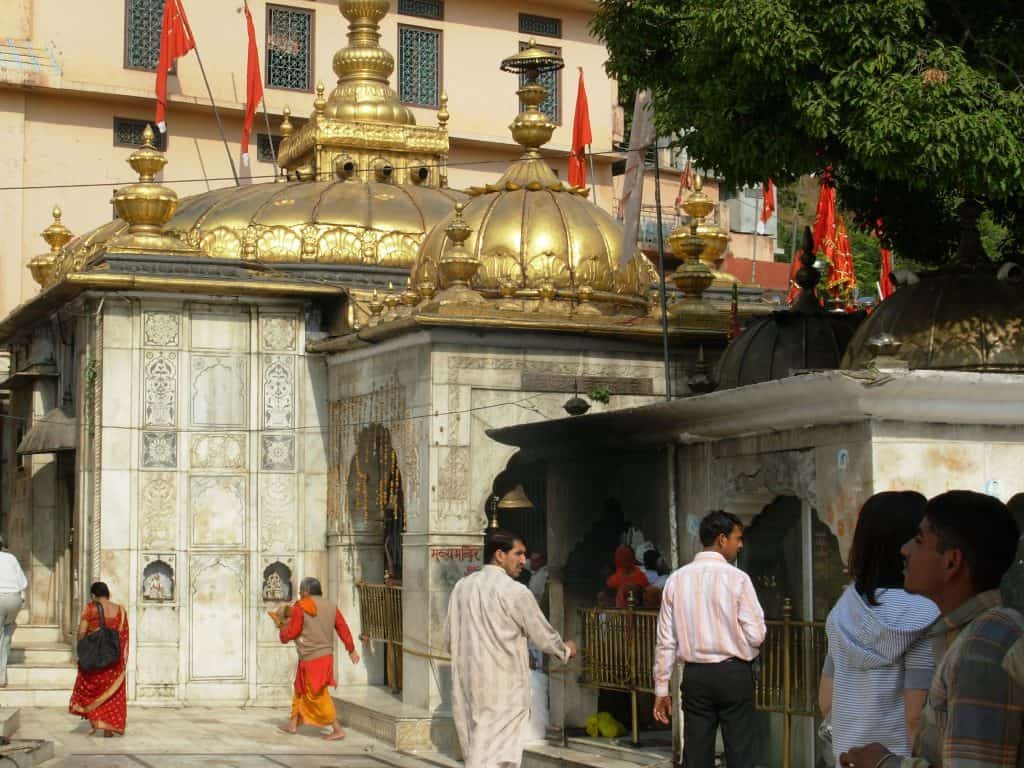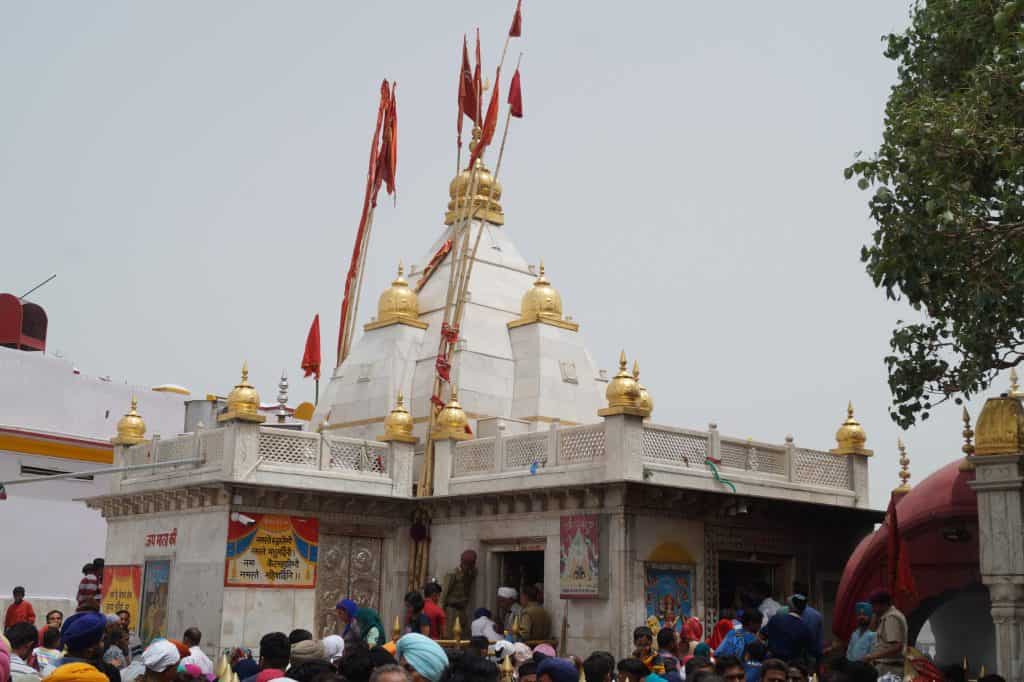Shakti Peeth temples in Himachal Pradesh, offer spiritual solace and breathtaking views for devoted pilgrims and travellers.

India is a land of diverse cultures and deep religious sentiments. Its temples are renowned worldwide for their grandeur and beauty, attracting not only Hindus but also people of various faiths from around the globe. Among these revered sites are the Shakti Peeths, significant pilgrimage destinations for Hindus.
Shakti Peeths, meaning “seats of power,” are dedicated to Goddess Shakti, the principal deity in Shaktism. There are 51 such Peeths in India, each devoted to Devi Shakti, considered the power of Lord Shiva, the destroyer of evil. According to legend, when Sati immolated herself in protest of her father Daksha’s disrespect towards her husband, Lord Shiva carried her charred body in sorrow. To ease his pain, Lord Vishnu used his Sudarshan Chakra to cut Sati’s body into 51 pieces, which fell across the Indian subcontinent, each location becoming a Shakti Peeth.
Each such temple is associated with a specific body part of Sati and has its own unique legend, rituals, and traditions. These temples signify her presence and are among the most revered and spiritually charged places in India. They attract countless devotees who seek the blessings of Devi Shakti.
Most famous Shakti Peeths in Himachal Pradesh
These ancient temples, deeply rooted in Hindu mythology, are believed to be the divine abodes of Goddess Shakti, the powerful feminine energy. Pilgrims are drawn to these holy sites not just for their religious significance, but also for the tranquil and transformative experiences they offer.
The spiritual ambience, coupled with the breathtaking natural beauty of the Himalayas, creates an irresistible draw for those seeking solace, enlightenment, and a deeper connection with the divine.
Whether it’s the legend behind each temple or the mystical energy that envelops them, the temples of Himachal Pradesh stand as beacons of faith, drawing countless devotees and curious travellers alike to their sacred grounds.
Jwala Ji Temple:
Jwala Ji, or Jwala Devi Temple, is one of the 51 Shakti Peeths in India and is highly revered. Located in the Shivalik range of Kangra Valley, known as “Kalidhar,” it is believed to be the first temple built by the Pandavas. This Devi temple, dedicated to the “Goddess of Light,” is situated in Jwala Mukhi, Kangra district, Himachal Pradesh.
Sati’s tongue is believed to have fallen at the site where Jwala Devi Temple now stands, represented by the perpetually burning holy flames. These flames make Jwala Devi Temple unique and unparalleled as a centre of faith. History tells us that Raja Bhumi Chand, a great devotee of Goddess Durga, dreamt of this sacred place. He sent people to find it, and upon locating the site, he built the temple.
The shrine features a gold-gilded dome, various pinnacles, and a silver entrance door. Situated within the Dhauladhar mountain range, the temple worships Goddess Jwalamukhi as an eternal flame emerging from a small fissure in a rock inside the sanctum sanctorum. Nine flames, symbolizing the Navadurgas, are worshipped here.
The origins of these flames remain unknown, with scientists suggesting they are fueled by natural gas from an underground volcano. Mughal Emperor Akbar once tried to extinguish the flames but failed, reinforcing his belief in the goddess. He even presented a golden parasol to the shrine, which transformed into an unknown metal. Thousands of pilgrims visit the shrine throughout the year to fulfil their spiritual desires.
Chintpurni Temple
Chintpurni is a highly revered Hindu shrine located in the Una district of Himachal Pradesh, situated atop one of the highest peaks of the Sola Singhi Range. The temple is dedicated to Chintpurni Devi, the goddess who is believed to relieve devotees of their worries and stress. The goddess is worshipped in the form of a headless pindi (round stone).
According to legend, a part of Sati’s feet fell at this location during her self-sacrifice, leading to the construction of the temple. Another story tells of the goddess appearing to defeat the demons Sumbha and Nishumbha. After killing them, she beheaded herself to quench the bloodthirst of her companion.
During Navratri, the temple hosts large fairs and festivities, attracting numerous devotees from around the world seeking the blessings of Mata Shri Chhinnamastika Devi. The fair takes place near the temple of Goddess Bhagwati Chhinnamastaka, where the goddess is believed to have appeared in ancient times.
The temple is surrounded by beautiful landscapes, offering tourists picturesque views and opportunities for sightseeing and various activities. Visitors can enjoy both the spiritual atmosphere and the natural beauty of the area.
Naina Devi Temple
Shri Naina Devi Ji, a major Shakti Peeth, is located in Bilaspur District, Himachal Pradesh, India. The temple is named after the legend that Goddess Sati’s eyes (Nayan) fell at this spot. It is one of the most sacred temples in the country, attracting devotees from around the world.
Surrounded by the majestic Shivalik range of the Himalayas, the temple is watched over by the highest peak, Mt. Nanda Devi, believed to be the sister of Goddess Naina Devi. An old Peepal tree within the temple premises provides shelter to pilgrims, while a statue of Lord Hanuman blesses and guards the temple entrance.

Inside the temple, two eyes in the centre represent Naina Devi, with Mata Kali to the left and Lord Ganesha to the right. Two lion statues, symbolizing the goddess’s vehicle, guard the inner shrine.
Bajreshwari Devi Temple: The left breast of Sati fell at this spot, making it a Shakti Peetha. The original temple was built by the Pandavas during the time of the Mahabharata. According to legend, the Pandavas dreamt of Goddess Durga, who told them she was in Nagarkot village. She warned them to build a temple for her there to ensure their safety. That very night, they constructed a magnificent temple.
The temple has been looted several times by Muslim invaders, with Md Gaznavi looting it at least five times. It once contained tons of gold and many silver bells. In 1905, a powerful earthquake destroyed the temple, but it was rebuilt by the government within a year.
The main entrance gate features a Nagarkhana, or drum house, similar to the Bassein fort entrance, and the temple is surrounded by a stone wall like a fort. Inside the main area, Goddess Bajreshvari is present in the form of a Pindi. The temple also has a small shrine dedicated to Bhairav. In front of the main temple stands an idol of Dhayanu Bhagat, who offered his head to the Goddess during Akbar’s time. The present structure has three unique tombs within it.
Chamunda Devi Temple
Chamunda Devi Temple, also known as Chamunda Nandikeshwar Dham, is a famous Hindu temple located in Padar on the banks of the Baner River in Kangra district, Himachal Pradesh. This temple is dedicated to Shri Chamunda Devi, a form of Goddess Durga. It is situated 19 km from Palampur town in Dharamshala Tehsil in Himachal Pradesh.
Chamunda Devi Temple is a sacred shrine where the ears of Sati are believed to have fallen. Dating back to the 16th century, the temple holds great historical and spiritual significance. The name Chamunda comes from two demons, Chanda and Munda, who were slain by Goddess Kali in a fierce battle. Thus, the goddess is worshipped here as Chamunda.
Himachal Pradesh’s temples are not just places of worship but also epitomes of divine energy and natural beauty. Visiting these temples provides a spiritual retreat and a chance to connect with the rich cultural heritage of India. Whether you’re a devout pilgrim or a curious traveller, these special temples of Himachal Pradesh offer an unforgettable experience.
Plan your pilgrimage to these sacred sites and immerse yourself in the divine aura of the Shakti Peeth temples.
Quick FAQs
Which is the most powerful Shakti Peeth temple in India? There are traditionally believed to be 64 Shakti Peeth locations. Adi Shankara’s Asta Dasha Shakti Pitha Stotram highlights 18 of these as the Maha Shakti Pithas. Among them, the temples at Kamakhya, Gaya, and Ujjain are considered the most sacred, symbolizing the three essential aspects of the Mother Goddess. In Himachal Pradesh, the Jwalamukhi Temple stands out as one of the most significant and revered, drawing countless devotees seeking blessings and spiritual enlightenment.
Can Vaishno Devi be considered a Shakti Peeth Temple? Yes, the Vaishno Devi Temple, located in Katra in the Trikuta Mountains within the Indian Union territory of Jammu and Kashmir, is indeed an important Hindu temple dedicated to Vaishno Devi. It is one of the 108 temples dedicated to Goddess Durga, who is worshipped in the form of Vaishno Devi. This sacred site holds immense significance for devotees seeking the blessings of the Mother Goddess.
Which are the most famous Shakti Peeth temples in Himachal Pradesh? Himachal Pradesh is home to several renowned Devi temples, including Chintpurni, Jwala Ji, Baglamukhi, Naina Devi, Kangra Devi, and Chamunda Devi. Additionally, the Baijnath Shiv Temple is also a significant and revered site, attracting countless devotees and spiritual seekers throughout the year.
Best time to visit Himachal Pradesh: The ideal time to explore Himachal Pradesh is from February to June during the pleasant spring and summer months. However, for those who enjoy the charm of snowfall, the most popular period is between October and February, when winter blankets the region in a magical layer of snow.
Read more: Latest



